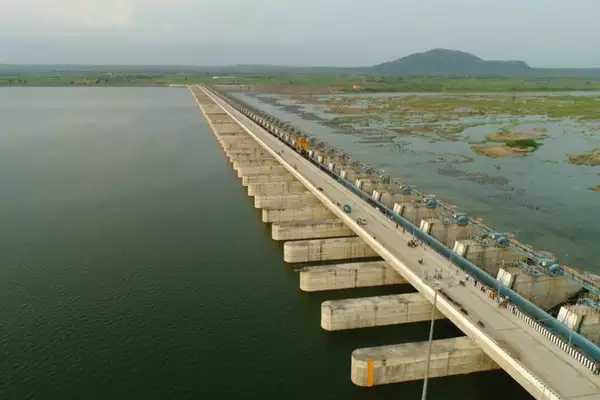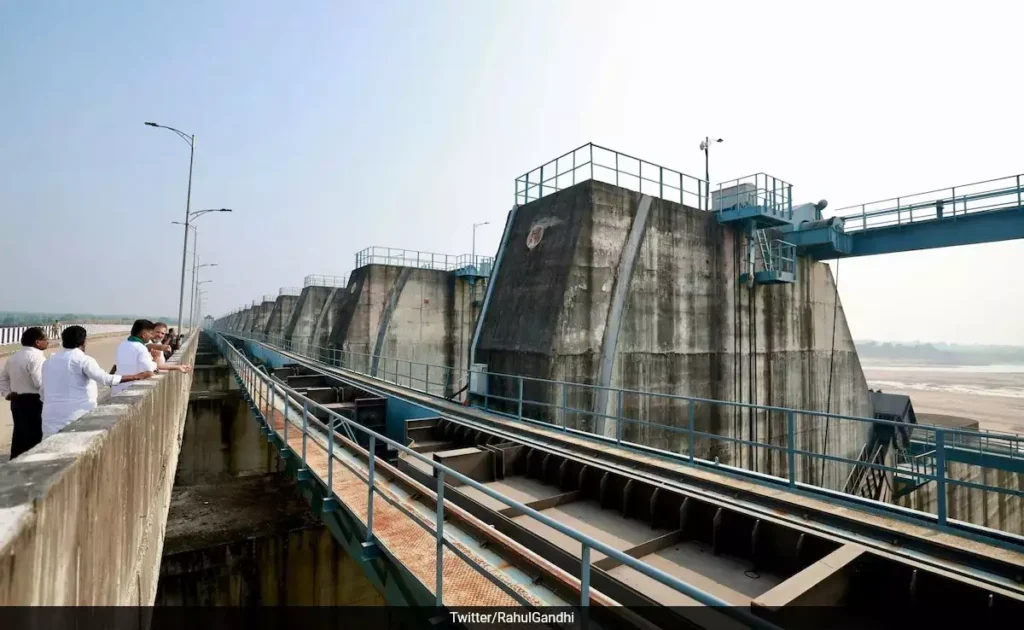National Dam Safety Authority (NDSA) has recently concluded that the sinking of piers at the Medigadda barrage was caused by failures in its planning, design, quality control, operation, and maintenance.
- The Medigadda Barrage (Lakshmi Barrage) is the starting point of the Kaleshwaram Project.
About Kaleshwaram Lift Irrigation Project (KLIP):
- Kaleshwaram Project is a multi-purpose irrigation project built on the Godavari River at Kaleshwaram village, Telangana.
- Objective: To utilize Godavari water for drinking and irrigation.
- It is currently the world’s largest multi-stage lift irrigation project.
- In lift irrigation, the water is not transported by natural gravity but has to be lifted through pumps.
- It is said to have the world’s largest underground pumping station (470 feet below the earth’s surface).
- It envisages the construction of 3 barrages between Yellampally and Medigadda.
What is a Barrage?
- A barrage is a type of low-head, diversion dam, that has a series of large gates that control the amount of water passing through.
- This allows the structure to regulate and stabilize river water elevation upstream for use in irrigation and other systems.
- The gates are set between flanking piers which are responsible for supporting the water load of the pool created.
- The term barrage is borrowed from the French word “barrer” meaning “to bar”.
- It is mostly built near the mouth of the river.
- They are given a safety rating depending on the type of dam, location, and the possible effects in case of failure.
- The ratings are from 1 to 5, with five having the highest danger rating.
- Impact on Environment:
- Dams affect the migration of fish, leading to less reproduction, thus impacting their population.
- High water flow decreases the nutrient levels.
| UPSC IAS Preparation Resources | |
| Current Affairs Analysis | Topperspedia |
| GS Shots | Simply Explained |
| Daily Flash Cards | Daily Quiz |



